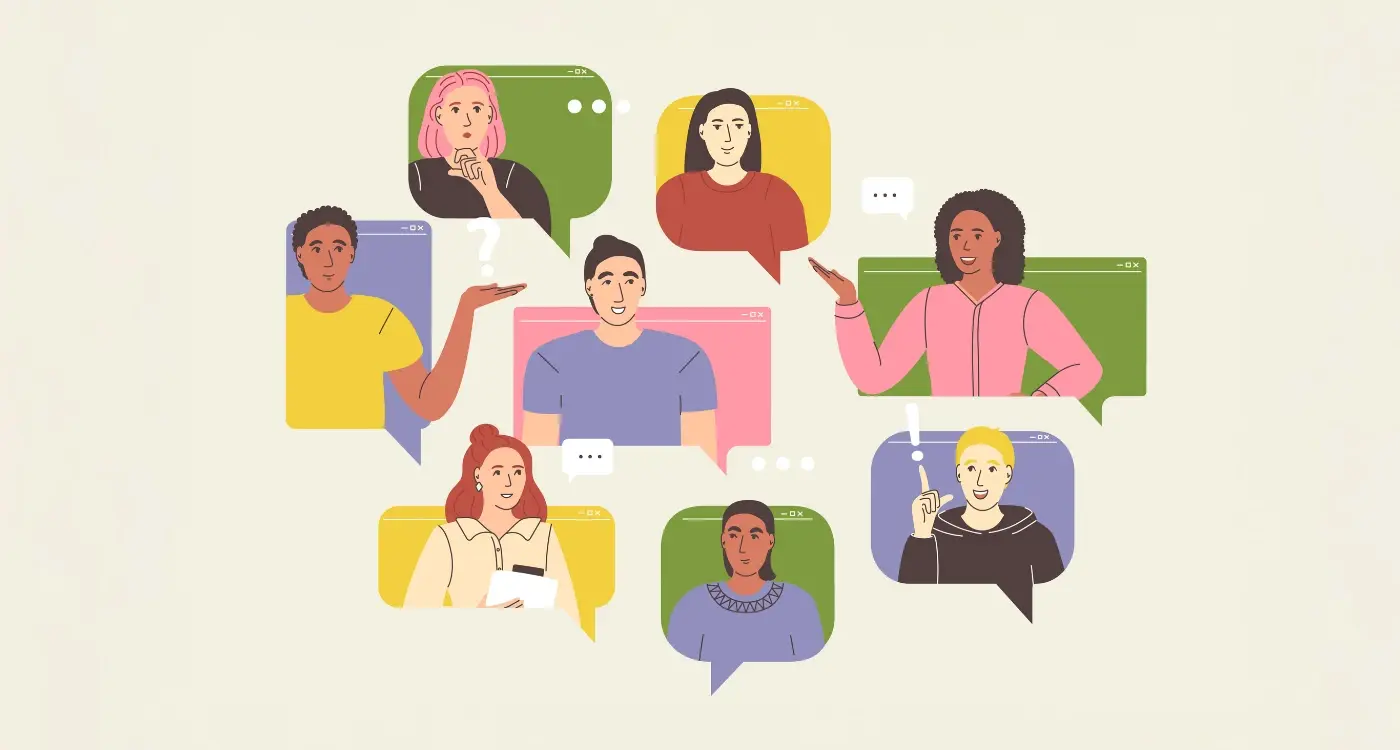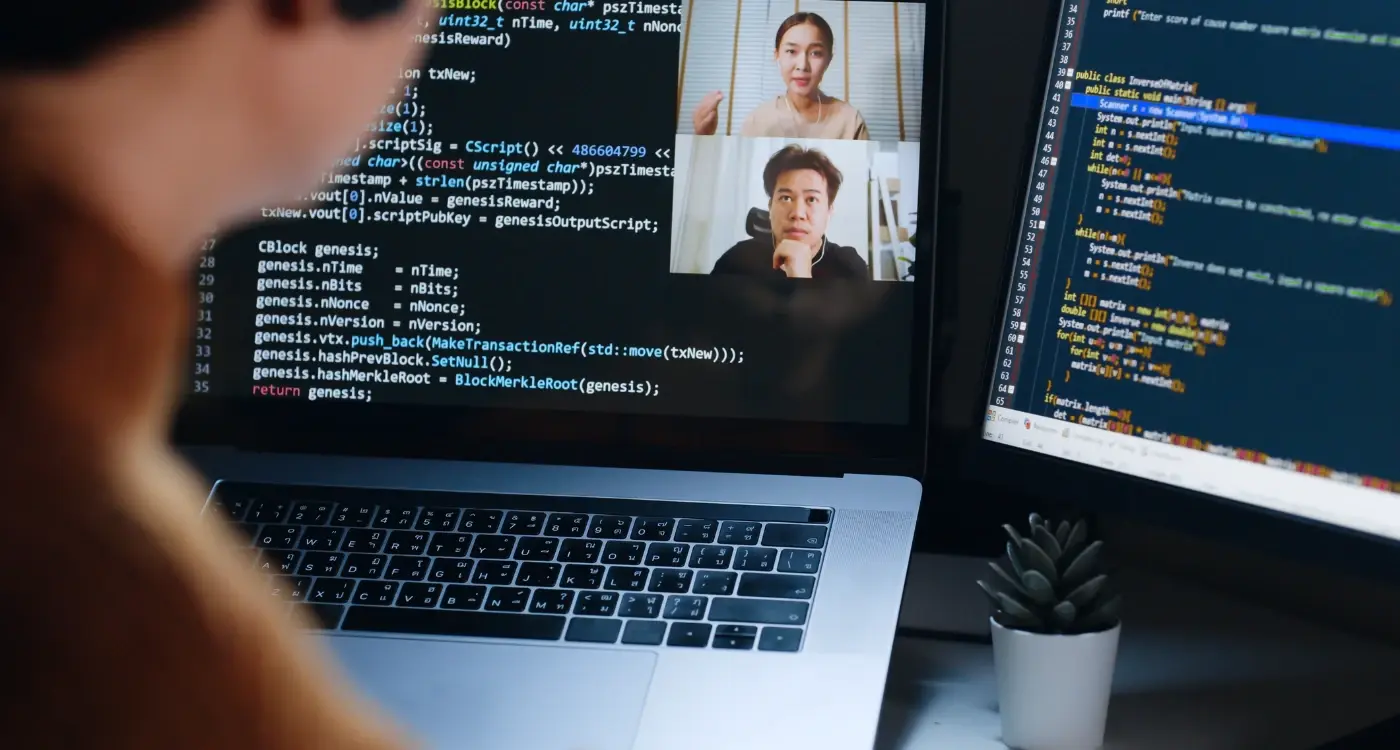How Do I Hire Developers Who Understand Vibe Coding?
Most developers can write code that works, but only a select few understand how to write code that feels right. This distinction has become the deciding factor between apps that users tolerate and apps they genuinely love using. When you're building something that people will interact with daily, the difference between functional code and intuitive code can make or break your project.
Vibe coding isn't just another tech buzzword—it's a development approach that prioritises user experience at the code level. Think of it as writing software that anticipates what users want before they even know they want it. The challenge? Finding developers who actually understand this concept and can implement it effectively.
The best code doesn't just solve problems; it creates experiences that feel natural and effortless
This guide will walk you through the entire process of identifying, hiring, and managing developers who truly get vibe coding. We'll cover everything from understanding what makes these developers special to avoiding the common pitfalls that can derail your hiring process. Whether you're building your first app or expanding an existing team, you'll learn how to spot the developers who can transform your vision into something users will actually enjoy using. By the end, you'll have a clear roadmap for building a team that doesn't just deliver code—they deliver experiences.
What Is Vibe Coding and Why Does It Matter
Right, let's get straight to the point—vibe coding isn't some trendy buzzword that'll disappear next month. It's actually a pretty simple concept that's been quietly shaping how the best mobile apps get built. Think of it this way: you know when you use an app and everything just feels right? The buttons are exactly where you expect them, the animations don't make you dizzy, and somehow you can navigate through it without thinking too hard. That's vibe coding in action.
At its core, vibe coding means writing code that creates apps people actually want to use. Not just apps that work—apps that feel good to use. I've seen too many developers who can build technically perfect apps that nobody enjoys using because they missed this fundamental point.
The Human Side of Code
Here's what makes vibe coding different from regular coding: it's not just about making buttons work or data load quickly. It's about understanding that real people will tap, swipe, and interact with what you're building. A vibe coding developer thinks about how someone will feel when they use the app—will they get frustrated? Will they smile? Will they come back tomorrow?
This approach matters more now than ever because app stores are packed with millions of options. Users won't stick around if your app feels clunky or confusing, no matter how clever your backend architecture is. Understanding what makes stellar apps different from so-so apps is crucial for creating experiences that truly resonate with users.
Understanding the Skills That Make a Great Vibe Coding Developer
Right, let's talk about what makes a vibe coding developer tick. After working with dozens of developers over the years, I've noticed that the best ones share certain traits that go way beyond just knowing how to code. They're the ones who can feel their way through problems—making quick decisions and adapting when things don't go to plan.
First up, they need solid AI development skills. I'm talking about understanding machine learning frameworks, being comfortable with data processing, and knowing how to integrate AI tools into mobile apps. But here's the thing—it's not just about technical knowledge. These developers need to think creatively about how AI can solve real user problems.
The Human Side of Technical Skills
What separates good vibe coding developers from great ones is their ability to communicate. They can explain complex technical concepts to non-technical team members without making anyone feel stupid. They listen to feedback, ask the right questions, and aren't afraid to admit when they don't know something.
Speed and Adaptability
Vibe coding moves fast. The developers who thrive in this environment are comfortable with uncertainty and can pivot quickly when requirements change. They don't get bogged down in perfectionism—they ship working solutions and iterate based on real user feedback.
Look for developers who have experience with rapid prototyping tools and can show you examples of projects they've built quickly. Their GitHub should tell a story of consistent, iterative development.
Where to Find Developers Who Get the Vibe Approach
Finding developers who understand vibe coding isn't like shopping for groceries—you can't just pop into your local supermarket and pick them up! From my experience working with countless development teams, I've learned that the best vibe coding developers often hide in plain sight. They're the ones who care more about solving real problems than showing off their technical skills.
Traditional job boards like LinkedIn and Indeed work, but they're not always the goldmine you'd expect. The developers posting there might be skilled, but they don't always have that special understanding of user experience that makes vibe coding work. Instead, I've found better luck looking at platforms where developers showcase their actual work.
The Best Places to Look
GitHub is brilliant for this—you can see how developers think and work by looking at their code. Dribbble and Behance show you developers who care about design. Stack Overflow reveals those who help others solve problems. Don't overlook local meetups and tech communities either; some of the best vibe coding developers prefer face-to-face networking.
- GitHub repositories with clean, well-documented code
- Design platforms like Dribbble and Behance
- Developer communities and forums
- Local tech meetups and conferences
- Coding bootcamp graduates who focus on practical skills
Remember, the best developers who get vibe coding are often already employed and happy. They're not desperately searching for jobs—they're passionate about their craft and want to work on projects that matter. If you're looking for specific expertise, consider hiring London app developers who have proven experience with both technical skills and user-focused development.
How to Test for Vibe Coding Skills During Interviews
Testing for vibe coding skills during interviews requires a different approach than traditional coding assessments. You can't just throw a technical challenge at someone and expect to understand how they work with AI development tools. Instead, you need to see how they think, adapt, and collaborate with intelligent systems in real-time.
Start with practical exercises that mirror real work scenarios. Give candidates access to AI coding tools and ask them to build something small but meaningful—maybe a simple feature or fix a bug in existing code. Watch how they interact with the AI suggestions, whether they blindly accept them or critically evaluate each recommendation. The best vibe coding developers will treat AI as a collaborative partner, not a magic solution.
Screen Sharing Sessions Work Best
I always recommend doing these tests over screen sharing so you can observe their thought process. Ask them to talk through their decisions as they code. Do they explain why they're choosing one AI suggestion over another? Can they spot when the AI gets something wrong? This verbal feedback tells you more about their developer expertise than any written test ever could.
The best vibe coding developers don't just use AI tools—they dance with them, knowing when to lead and when to follow
Don't forget to test their ability to work without AI assistance too. Sometimes the tools fail or give poor suggestions, and you need developers who can fall back on solid fundamentals when needed. Look for insights from what developers can learn from top app development companies to understand industry best practices.
Building a Team That Works Well Together
Getting individual developers who understand vibe coding is one thing—getting them to work together as a team is another challenge entirely. I've seen brilliant developers who could code beautifully on their own but struggled when they had to collaborate with others. The magic happens when your team clicks together.
Creating the Right Environment
Your vibe coding team needs space to breathe and think creatively. This means setting up processes that don't crush their natural flow. Daily stand-ups should be conversations, not interrogations. Code reviews should focus on understanding the thinking behind decisions rather than just catching bugs. When developers feel safe to express their ideas and experiment, they produce better work.
Communication That Actually Works
Vibe coding developers often think in abstract ways—they need to translate those thoughts for the rest of the team. Encourage them to explain their reasoning behind design choices and technical decisions. This isn't about justifying every line of code; it's about sharing the vision that guides their work. When everyone understands the 'why' behind the code, collaboration becomes much smoother and more productive.
The best teams I've worked with have regular informal chats about the project's direction. Not meetings—just conversations where ideas can flow freely. Consider how app development projects can improve customer service through better team collaboration and user-focused development approaches.
Common Mistakes When Hiring Vibe Coding Developers
After years of helping companies build their development teams, I've noticed the same hiring mistakes crop up time and time again. The biggest one? Focusing too much on technical skills and not enough on how well someone understands the human side of coding. You know, the bit where developers need to think about what users actually want—not just what the code can do.
Another mistake I see constantly is rushing the interview process. Companies get excited when they find someone who can code well, so they skip the part where they test whether that person can work with AI tools effectively. This is a problem because vibe coding developers need to be comfortable collaborating with AI, not competing against it.
Testing for the Wrong Things
Many hiring managers still use old-school coding tests that don't reflect how modern development actually works. They'll ask candidates to solve complex algorithms on a whiteboard instead of seeing how they approach real problems using AI development skills. This completely misses the point of what makes a good vibe coding developer.
The final mistake? Hiring individual stars instead of thinking about team building. A brilliant developer who can't collaborate well with others will struggle in a vibe coding environment where teamwork and communication matter just as much as technical ability. Understanding the current state of mobile development can help you avoid outdated hiring practices.
Always include a practical session where candidates work alongside AI tools during your interview process—this shows you their real working style.
Managing and Supporting Your Vibe Coding Team
Once you've assembled your vibe coding team, the real work begins—keeping them happy, productive, and working well together. I've managed development teams for years and I can tell you that vibe coders need a different approach than traditional developers; they thrive on creative freedom and hate being micromanaged.
The key is creating an environment where they feel trusted to make decisions. Give them ownership of their projects and let them solve problems their way. Regular check-ins work better than rigid daily standups—these developers prefer flexibility in how they structure their day.
Creating the Right Environment
Your team needs space to experiment and fail without fear. Vibe coders often find solutions through trial and error, and that's perfectly normal. Set up your processes to support this creative approach rather than fighting against it.
- Provide flexible working hours that match their natural productivity patterns
- Encourage pair programming sessions to share knowledge and techniques
- Create dedicated time for experimentation and learning new approaches
- Celebrate creative solutions, even if they seem unconventional
Supporting Long-term Growth
Vibe coders need continuous learning opportunities to stay motivated. Budget for training, conferences, and new tools. Most importantly, give them challenging projects that push their boundaries—nothing kills a vibe coder's enthusiasm faster than boring, repetitive work. Consider how your app developers can take business apps to the next level through proper support and challenging projects.
Conclusion
After years of working with development teams, I can tell you that hiring vibe coding developers isn't just about finding people who can write code—it's about finding developers who understand that AI development skills need to mesh with human creativity. The best teams I've worked with have always had that special mix of technical expertise and collaborative spirit that makes everything click.
Building a successful team around vibe coding means looking beyond the CV and really understanding how someone approaches problems. Do they get excited about working alongside AI tools? Can they adapt when things change quickly? Are they comfortable with the back-and-forth nature of modern development? These questions matter more than you might think.
The hiring process doesn't end when you sign contracts either. Supporting your vibe coding team means giving them space to experiment, fail, and learn together. I've seen brilliant developers struggle in rigid environments and average ones flourish when given the right support structure.
Remember that vibe coding is still evolving—what works today might need tweaking tomorrow. The developers who thrive in this space are the ones who see that as an opportunity rather than a problem. Focus on finding those people, and your team building efforts will pay off in ways you hadn't expected.
Share this
Subscribe To Our Learning Centre
You May Also Like
These Related Guides

How Do You Handle Communication Barriers With Remote Development Teams?

How Do You Keep Everyone Happy During App Development?



